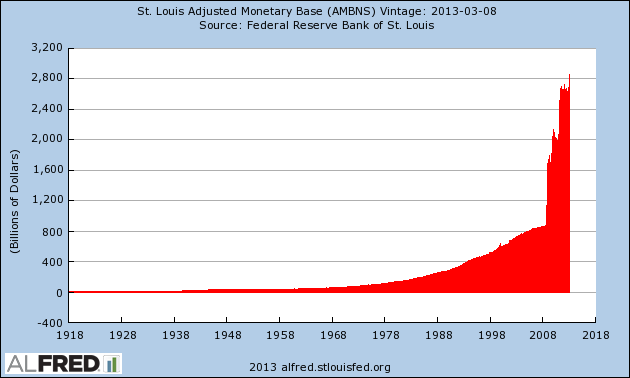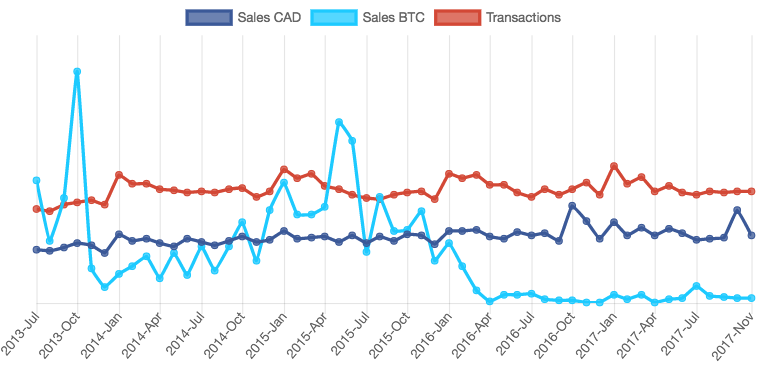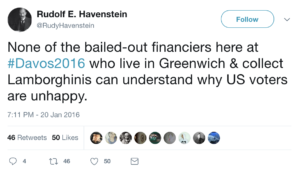
To me and many others, bitcoin is not a technical revolution as much as it is a triumph of political and economic incentives.
— Two Bit Idiot
“Systems like Ethereum (and Bitcoin and NXT, and Bitshares, etc) are a fundamentally new class of cryptoeconomic organisms — decentralized, jurisdictionless entities that exist entirely in cyberspace, maintained by a combination of cryptography, economics and social consensus”
— Vitalik Buterin
In Part I we took a look at “What Bitcoin Isn’t”, where all the usual comparisons and analogies around Bitcoin were shown to be poor fits in explaining what the phenomenon really is, ending on the obvious next question:
What is Bitcoin then?
Money is one of those “aquarium characteristics” of life. Aside from worrying about our bills or investments, the general structure of “money” is a background medium that underpins everything and for the most part we don’t really pay attention to it. Other examples are the base utilities like electricity and running water.
As we live our lives in these “aquariums”, we don’t really question the nature or the delivery mechanisms of these structural/cultural mediums we’re immersed in, unless they stop working or until they undergo a radical change.
A brief history of monetary innovation
What we are experiencing today is a technological innovation that is moving the nature of money itself from one form to the next and that is something that has only happened a few times throughout recorded history. It is because we are talking about a fundamental restructuring of the nature of money, and not an asset bubble occurring within the confines of the prevailing monetary system, that we can apply the “This time is different” label to Bitcoin.
Centralized, opaque, debt-based, money is being disrupted by decentralized, open source, competitive crypto-currencies.
This disruption has occurred out of necessity, given the irreparable harm central bank policies have inflicted on the citizenry over the last century, reaching what can only be considered a crack-up crescendo of targeted inflation, QEternity, ZIRP and NIRP, the war on cash and capital controls over the last 10 years. The most fitting label for all this is Chris Martenson’s “financial repression”.
During the era of debt-based money/fiat currency whenever an asset bubble occurred, “this time is different” was never actually different. Galbraith’s observation from the Part 1 bears repeating and it holds up:
The world of finance hails the invention of the wheel over and over again, often in a slightly more unstable version. All financial innovation involves in one form or another, the creation of debt secured in greater or lesser adequacy by real assets.”
(emphasis added)
But as mentioned in Part 1: Bitcoin is not a debt based bubble. Leverage doesn’t account for the majority of the price action, at least not yet. As I write this, CBOE futures went live this week. Also, most exchanges are offering margin and a lot of traders are dumb enough to try using it, but that is not the driving factor pushing Bitcoin adoption. These emerging stories of people mortgaging their homes to buy bitcoin are “newsworthy”, and thus still sporadic. Debt would be a driving force of the bubble when it’s systemic.
Looking at Bitcoin as a technology shift, there have only been a handful of really big shifts in money throughout history: We had barter, then either money then debt, or debt and then money.
Anthropologist David Graeber (Debt: The First 5,000 Years) makes a case that contrary to conventional theory, barter did not beget money, but rather debt in the form of obligations came first. This was the first true abstraction of deferring present consumption into future value. Owing somebody something, whether it was returning a favour, or later, some symbolic representation of that favour, and that was the progression toward “money”.
Graeber’s larger point is that debt, the first big monetary innovation after barter, has been used ever since by a small minority of people to enslave the rest of the populace.
It’s a compelling argument. In either case, aside from subsequent innovations such as the creation of the banknote, which facilitated transmission of value at a distance, and double entry accounting, nothing much has happened in the structural shape of money since the last big innovation, which was the rise of fractional reserve banking.
Everything since then, from various fiat currencies, to credit cards to the magnetic strip or PIN chips have been variations on a theme, the theme being debt is money. As long as the various modern welfare states continue to spend more than they receive, they have to keep creating and monetizing more debt in order to keep the wheels on the system as a whole.
Crypto-currency is not debt
Crypto-currency is built on mathematics, open source, consensus and decentralization. These attributes combine to give us a monetary system with defining characteristics which set it apart from the current, fiat based model:
Inelastic
It’s Inelastic because as we all know there are only a set amount of coins that will ever be created. This is in stark contrast to the supply of money in fiat terms. As somebody jokingly tweeted the chart I included from Part 1 “Wow look at that bitcoin price! Oh wait, that’s the chart of the money supply” – more on this below.

This inelasticity makes Bitcoin and any other similarly constructed crypto-currency….
Deflationary
A deflationary currency is closey related to being inelastic, but we need to look specifically at the deflationary aspects of Bitcoin because conventional economic thought is that “deflation is bad”, and it is — if you’re using debt for money.
The reason why is because debt-based money, enabled by fractional reserve banking allows monetary units to “exist in two places at once”, so to speak. When I first started thinking about and researching all this economics and history stuff, it was in the immediate aftermath of the crashing of the dot com bubble. It was then when I realized that I had no understanding of economics, or finance and ultimately, money. So I began a “deep dive” into these matters which continues to this day.
One of the first books I read about it was Ferdinand Lips “Gold Wars”. Lips, Swiss banker, and expert on the Classical Gold Standard was reputed to have been the cryptic and anonymous “Friend of Another (FOA)” financial and gold markets commentator of the late 90’s (foreshadowing of Satoshi Nakamoto?).
When I pulled out my copy of the book recently I found I had scribbled the following into the back cover after I had finished reading it:
“Gold, like every other ‘normal’ thing cannot be in two places at once. Fiat money, however, is credit, redeemable into nothing, that is simultaneously counted as ‘money’ by multiple parties – this works as long as the bubble is growing – but can’t work if it starts to contract. If N parties hold the same ‘fiat’ and one suddenly uses it to retire debt, N-1 parties have the carpet pulled from underneath them. Because under a paper fiat money system, reducing debt (either by paying it off or defaulting) reduces the money supply”
My understanding of this today, is that Bitcoin is inelastic and thus deflationary. It has no counter-party risk (but there is consensus risk, but fiat has it as well), and it solves “the double-spend problem”. Fiat money, by contrast is one big double spend problem. The defining characteristic of inflationary debt-based money is mathematically and cryptographically eliminated under crypto-currency.
Under an inelastic or hard-backed monetary regime, such as the era the Classical Gold Standard (when there was no income tax and mild deflation) or the one emerging today, deflation is virtuous, not the other way around.
By contrast, debt-based inflationary money creates a treadmill economy, which perniciously pushes assets up the wealth inequality ladder, as the Plutocrats on top spend their compounding wealth on buying up assets, while the lower tiers (the non-super rich) must continually and incrementally spend more of their purchasing power on staying alive.
Many conventional economists say deflationary currencies wouldn’t work because:
1) There wouldn’t be enough “monetary units” to go around to purchase all the good and services available within the economy, and
2) It leads to HODLING, or hoarding. The theory states that people wouldn’t spend any money today, because doing so would forgo the increased value the money would have tomorrow.
Detlev S. Schlichter’s “Paper Money Collapse” is a dispassionate, objective look at why fiat money always goes to zero, every time, throughout all history, no exceptions and what would happen in an environment with a deflationary currency instead:
“A monetary system with a money commodity of essentially fixed supply will experience secular deflation. A growing economy, with an entirely inflexible money supply will exhibit a tendency for prices to decline on trend, and for money’s purchasing [power] to steadily increase. But the key question now, is why should this be a problem? We have already seen that historically secular deflation was rather minor and that it certainly never appeared to present any economic difficulties. [ What economists today fear in a ‘deflationary death spiral’ scenario is debt collapse and accompanying contraction of the money supply, not deflation itself – markjr] No correlation between deflation or recession or stagnation is evident under commodity money systems. We will now show that there are no reasons on conceptual grounds to consider deflation to be a problem”
Which he then spends the rest of the book doing exactly that. From personal experience, as a merchant who has been accepting bitcoin payments since 2013 I know that the increasing price of bitcoin has not slowed down transaction volume or aggregate payments received (in dollar terms):
A deflationary currency sees prices drop over time as purchasing power increases.

The chart above depicts the trendlines of transactions in Bitcoin on easyDNS from 2013 to present. I haven’t put the Bitcoin price trend line in there but we all know what it looks like, if it were in the graph it would be a hockey stick with the inflection point starting around Jan 2016. We clearly see the pricing in BTC dropping as the price rises, yet the transaction volume and sales in CAD remain steady, with a moderate uptrend.
Bitcoin is Transparent
It’s Transparent in two ways, first is the blockchain, where we can see the flow of bitcoin and all the transactions; and second the underlying code is open source.
Anybody can look at any block in the blockchain, and anybody can pull down the source code that actually runs all this and read it for themselves.
Contrast this radical transparency with, say, The Federal Reserve, which has an exclusive monopoly on the creation of money, creates it out of nothing and then lends it to the State and charges interest on it. Further, it is owned by a cartel of private banks and operates with no oversight. This is the crux of the current monetary era. For the longest time it was possible to dismiss criticisms of this system as “conspiracy theory”, but given that the damage Fed policies have caused to the economy, especially since the GFC is felt by all but a few, it is increasingly difficult to ignore this reality.
Anybody who actually analyzes this system going beyond the mainstream narrative of what The Fed is supposed to be doing would come up with the same conclusion I did some time ago:
“if smart, scholarly people happen to believe that government fiat money is both feasible and beneficial to society, and they put serious thought into devising such a system, what they will not come up with is one run by private central banks issuing debt-based money. They just won’t. Any critical analysis would grasp that such an architecture would become a parasitic cancer on the entire society. When you realize this, it’s hard not to posit a far-reaching conspiracy to institutionalize inequality. While I am a big believer in the maxim “never ascribe to conspiracy what can be explained by stupidy” it to me falls short in this case. When we look at the structure of the entire monetary system and realize that it’s the worst way possible to design a such a system if you have the best interests of the wider society in mind then you can’t help but ask ‘in whose interests was it designed and implemented?'”
Antifragile
Nassim Taleb, in his seminal work by the same title, invented the term “antifragile”, describing any phenomenon that gets stronger when it encounters volatility. The “imminent death of Bitcoin” is probably the one thing that has been predicted even more than the “imminent death of the Internet”, which was a popular recurring theme back in the late 90’s or so.
Both technologies – the Internet and then crypto-currency are decentralized, largely open source protocol stacks that have transformed our civilization.
These qualities make crypto currency something that is anathema to the previous paradigm’s debt-based fiat. As such, it poses an existential threat to existing incumbents, be they technocrats, banksters, career politicians, or complicit corporate cartels, whose position depends on their proximity to and relationships with the money centre apparatus that creates money and preferentially distributes it out amongst this network.
What does it all mean?
When we ask ourselves this question we’re back to Graeber’s assertion that the entire monetary system is a control mechanism that uses debt to keep the wider populace in line.
This was largely tolerated by a general population that was largely ignorant of the working dynamic of the money system and how it enslaves them. Keynes himself observed that
“By a continuing process of inflation, governments can confiscate, secretly and unobserved, an important part of the wealth of their citizens. There is no subtler, no surer means of overturning the existing basis of society than to debauch the currency. The process engages all the hidden forces of economic law on the side of destruction, and does it in a manner which not one man in a million is able to diagnose.”
For a long time Keynes was right. Then, as the century-long debt super-cycle started to crescendo a couple of key events happened.
The first was the Global Financial Crisis 2007-2009 and the purported “near-death experience” of the modern economy. Wall Street was bailed out, who used the money to give themselves bonuses, while the middle-class was decimated and continues to be ground into poverty to this day. There was incongruence in this picture, on one hand incompetence and financial recklessness was rewarded while the rule-following middle class were penalized.

The 95 White Papers
It was at this moment, that the Satoshi White Paper appeared on the scene, and proposed a different way to structure the monetary system.
Nobody really noticed. But it set off a chain of events as sure as Martin Luther’s “95 Theses” set in motion the secular decline of another hitherto undisputed hegemonic central power: The Catholic Church. In that time the result was The Reformation and the Catholic Church never regained its central power position.
One document galvanized an entire movement, and the harder the Papacy pushed back on Luther to try to contain it, the faster Protestantism spread — there’s that antifragility again.
Protestantism presented enough benefits to enough royal houses throughout Europe that when weighed against the authoritarian and decadent papacy, the upside to the new paradigm looked better than the old system – and that is precisely what it is happening, again, today, in the monetary sphere.
For the first few years after Satoshi’s paper, Bitcoin didn’t really break into the public consciousness but the wheels were certainly in motion and those people who had a lot at stake and were coming to gain a visceral understanding of the hypocrisy and capriciousness, not to mention the destructiveness of the current monetary regime were paying close attention.
It wasn’t until another event, years later, that people would begin to see the efficacy of crypto-currency in protecting wealth and savings. That event was the Cyprus bail-in. The framework for “containing” that event was quickly adapted by other nations, slipped into the “back pocket” to be used down the road. It became law here in Canada:
“In the unlikely event that a systemically important bank depletes its capital, the bank can be recapitalized and returned to viability through the very rapid conversion of certain bank liabilities into regulatory capital.”
This provision, originally from the Harper government has been reiterated under Trudeau the 2nd.
Of course, the language here is telling, belying the assumption on the part of the political elites that the rabble is ignorant and easily fooled. Similar to how barely “one man in a million” can diagnose inflation, they assumed even fewer would know that “certain bank liabilities” are the depositors’ savings.
But people do know what that means. Now it was clear – unless we owned a bank we were all pretty much on our own, and even worse, whenever those banks went off and painted themselves into a corner of insolvency, we were the ones who were going to have to make them whole. Banks are “too big to fail”, everybody else is expendable.
Bitcoin is a hole …in a burning building
“I had the thought that Bitcoin is like a hole in the wall of a burning building. The burning building is the petrodollar. The Bitcoin hole in the wall doesn’t meet any standard definition of a door. It wouldn’t pass a building inspection and it may not last long. It will most certainly be replaced by something else in the long run. But in the short term, no one inside that burning building really cares about any of that and the ones that first smelled smoke are already pouring through it. Many more will follow and some, sadly, will die in the fire. There are other exits from the building too, some may be safer than others, but the most important thing is getting out of the burning building as quickly as possible.
— from the comment thread on Zerohedge for Part 1 of this article (the only thing I would add to this is that the other exits lead to other burning buildings – markjr)
And this finally brings us to what I think Bitcoin really is. It’s a type of capital / currency flight. In a way, (and I didn’t coin this analogy but I can’t find who did) all fiat currencies are experiencing a hyper-inflationary collapse against Bitcoin. It makes a certain amount of sense, the logical outcome for the vast monetary printing of the last century is an inflationary blowout. But that conjures up images of Weimar Germany and wheelbarrows full of cash, the recent Zimbabwe collapse or perhaps Brazil – where banks installed a second clock to display the value of your money eroding while you waiting in line, it all seems so unthinkable here.
And yet, here we are with Bitcoin in a bubble, stocks in a bubble, bonds in a bubble, real estate – in a bubble, is everything in a bubble? Or are we experiencing a slow motion breakdown in the underlying fiat regime in a typically cavalier and nonchalant Western way? Not some James Rawles “end of civilization” novel but rather a mass exodus into anything perceived as “an asset” whilst Bitcoin surpasses them all because of a combination of inertia and the fact that’s it’s effectively an antidote to a global parasitic economic blight?
Having said this, even if this were true, it doesn’t mean “the price of bitcoin will go up…forever”. Even true hyper-inflationary episodes themselves usually last about 12 to 18 months, after which a new currency regime comes in to replace it.
What we could be seeing here are the early innings that usher in the end of USD as the world reserve currency and the beginning of “what comes next”. The fact that USD hegemony will eventually end is no surprise to anybody, even mainstream economists. However “eventually” has this vexing habit of showing up sooner than most people expected.
So while there have only been a handful of monetary innovations throughout history, there have been many currency regimes, rising, overshooting, collapsing and giving way to the next.
What may be unique about this one is that we’re rare witness to a double faceted shift: the technology shift from a debt based fiat money system to a decentralized crypto currency regime; along with the demise of the prevailing currency regime.


I am absolutely delighted that someone is pushing back against the banksters and the governments that enable them. However, if bitcoin is finite and new people are getting in on it which raises the price for those already there–isn’t that the same effect (and eventual outcome) as a pyramid scheme?
No, because the nature of a pyramid scheme demands (eventually) an infinite number of new participants to pay off the old.
Read part 1.
Thanks so much for your excellent insights on Bitcoin and also the issues with debt-based monetary systems in general.
The question then becomes what do we do to change things? I’m not sure I have the answer to that big question, but there are a couple of thought leaders with some progressive ideas for change that I think people would be interested in:
The first is Bernard Lietaer – author of Rethinking Money – How New Currencies Turn Scarcity into Prosperity and other books. I’ve seen him speak and his solutions make a lot of sense to me and offer much more support for society in general. His website is http://www.lietaer.com.
The second person is Otto Scharmer. He is an MIT professor who has written extensively about how to reform current systems (business, self and society) from ego-centric ones to eco-centric. His latest undertaking is an initiative in concert with the Huffington post to spotlight how the global economy needs to be restructured around social and environmental justice. Details at https://www.presencing.org/#/news/news/press_release_pi_and_huffpost_to_focus_on_transforming_capitalism and https://www.huffingtonpost.com/entry/5a06ef9ce4b0f1dc729a6b39
Thanks again Mark for speaking out and sharing your thoughts. I appreciate what you are doing very much and hope that somehow we will find solutions to change things for the better.
Great article. You are obviously struggling with the overriding issue of our times: How do we convince everyone else to give up debt-based money and go to some form of equity alternative? And, how to go about making the change after hundreds of years of the growth of a power structure committed to a debt-based option?
I am the publisher of a book that attempts to contribute to the solution of that problem. Thieves Emporium is a technically-accurate analysis of these questions delivered in the form of fast-paced fiction to keep the reader interested. I recommend everyone reading this post pass it on to anyone who has started to question the debt-monetary-matrix that we are trapped in.
The work has received over 170 5-star reviews on sites such as Amazon, Goodreads, an Smashwords. Bitcoins & Gravy thought it was so good that he had the author on his show twice. One of the directors of the Bitcoin Foundation said of it: “I recommend you read this book.”
And you can start it for free because the editors of The Daily Bell thought it was so good that they ran it as a serial starting at http://www.thedailybell.com/editorials/max-hernandez-introducing-thieves-emporium-part-1-a-new-wilderness/
Or you could just buy a copy at Amazon, where it is rated 4.6 in 130 reviews (https://www.amazon.com/Thieves-Emporium-Max-Hernandez-ebook/dp/B00CWWWRK0) where I have kept the price low to encourage more readers.
The problem of how to explain to a non-Austrian about the problems we face is one that we all struggle with and, given the collapse that is coming soon, one that we must win if we are to prevent the banksters from just giving us a clone of what we now have when the dust clears.
Thieves Emporium is the best way I know of starting that process. Get a copy and start passing it around.
Have just read your post now, but I have the same issue with crypto currencies today that I had in 2017, Mainly the (false) perception of scarcity.
Yes, Bitcoin may have a finite supply, but crypto currencies in general are effectively unlimited in supply. Bitcoin is the current crowd favorite, but what actually differentiates Bitcoin from the thousands of other crypto currencies that currently exist and will be created in the future? Nothing but popularity as far as I can tell. If anything, all other cryptos are currently undervalued versus Bitcoin. If you feel that Bitcoin has some sustainable and inherent element of differentiation that justifies its current valuation then I'm all ears, because "scarcity" isn't it in my analysis.
On a related note, I must respectfully disagree with your aside to the quote above in which you comment "(the only thing I would add to this is that the other exits lead to other burning buildings – markjr)". One of the exits most definitely leads to physical gold. Physical gold is certainly NOT just another burning building. Physical gold is not debt-based, has no counter-party risk, and has true inherent scarcity…and has been a proven store of wealth and preserver of purchasing power for many hundreds of years. I'd argue strongly that physical gold remains a better "exit" than the "hole in the wall" that is Bitcoin.
That being said, the FOMO is real.
Whenever I hear people trot out the “anybody can create a crypto currency, thus BTC is not scarce” argument I find myself wondering if they think there are any valuable assets in existence. By following that same logic, are there any valuable companies? Are Apple or Amazon not really uncommonly successful because anybody can start up a company any time they want, so companies are basically a dime-a-dozen. Is there any valuable art in the world? I mean there’s a Picasso hanging on that wall over there, but really, anybody can pick up a marker and scribble on a canvas.
Whenever I hear the “but anybody can create a crypto-currency” I would tell them, “ok, so go do it”. You’ll quickly find that scarcity or lack of it isn’t the key driver of success. There are all kinds of one-off inventions out there that are the only one of their kind in existence and exactly zero people in the world care.
The success of things like Bitcoin and Ethereum are that a new form of non-State crypto-asset has been invented, and these are the protocols that at present have won the mindshare. That’s it. From here on in they have to retain their position through relevancy against all comers.
On the subject of gold, I wrote about this quite recently in Gold Vs Bitcoin is Fucking Stupid. You might want to read it.
Mark…Thank you for the response and the link to the article. I have read it now.
I share your sentiment in that it's not an either/or or "versus" argument. I agree that there are positives and negatives for both gold and Bitcoin. I follow your suggestion of having a full toolbox. Where we currently see things differently, then, is on the subject of relative value. One can feel fairly confident in the valuation of precious metals based on a long history and other variables. Personally, I have yet to find a measure for the valuation of Bitcoin with which I feel comfortable. Honestly, I'm sincerely trying to find such a yard stick. The only justification (that resonates with me anyway) is that Bitcoin has inherent scarcity. As you know from my previous post I understand that Bitcoin has inherent scarcity, but cryptocurrencies in general do not have any inherent scarcity…and, with all due respect, your argument that (paraphrasing, in no way belittling) "it's not as easy as you think to create a crypto" is diluted by the real world reality of the explosive growth in cryptocurrency availability in a short period of time…with an escalation possible.
Again, respectfully, I also have issues with your analogy of Bitcoin having value like an Amazon vs other online retailers. I could similarly argue that Studio54 is the hottest club ever even though New York has thousands of nightclubs. We have the benefit of hind sight with my analogy that makes it seem like a ridiculous comparison on the surface, but it would have been identical to your argument if this was 1979. At least with Amazon, I can find a valuation yardstick (sales, profits, whatever) that I still can't find for Bitcoin (other than popularity and momentum which is more akin to the Studio54 example).
Believe me, I'm not a "gold bug", I really am trying to determine if Bitcoin should be a part of my overall toolbox. Unfortunately, to date, most arguments for Bitcoin seem to derive strictly from "Bit bugs". Who out there knows if Bitcoin is fairly valued or not and why? And if you think you know, why isn't Ethereum or any of the 100's of other current cryptocurrencies valued in the same fashion?
Well said and as true now with demise of the USA ruling elite as it was when written!! Bravo. This certainly has helped me and mine understand and trust our innate intellectual feelings.
This article is aging well… so far.
However, defending Bitcoin against comparisons with pyramid schemes is becoming a bit of strawman argument.
More relevant critique of Bitcoin might be on the ground of bigger fool theory. After all, dot com graveyard is not laid with failed pyramid schemes, but with entities that run out of fools willing (and able) to pay ever increasing prices for something completely detached from its intrinsic value. Bitcoin price action has far outpaced inflationary (even not official inflation) fiat debasement. After all you could not buy a Tesla with 1 Bitcoin in 2014, so why does it buy it in 2021?